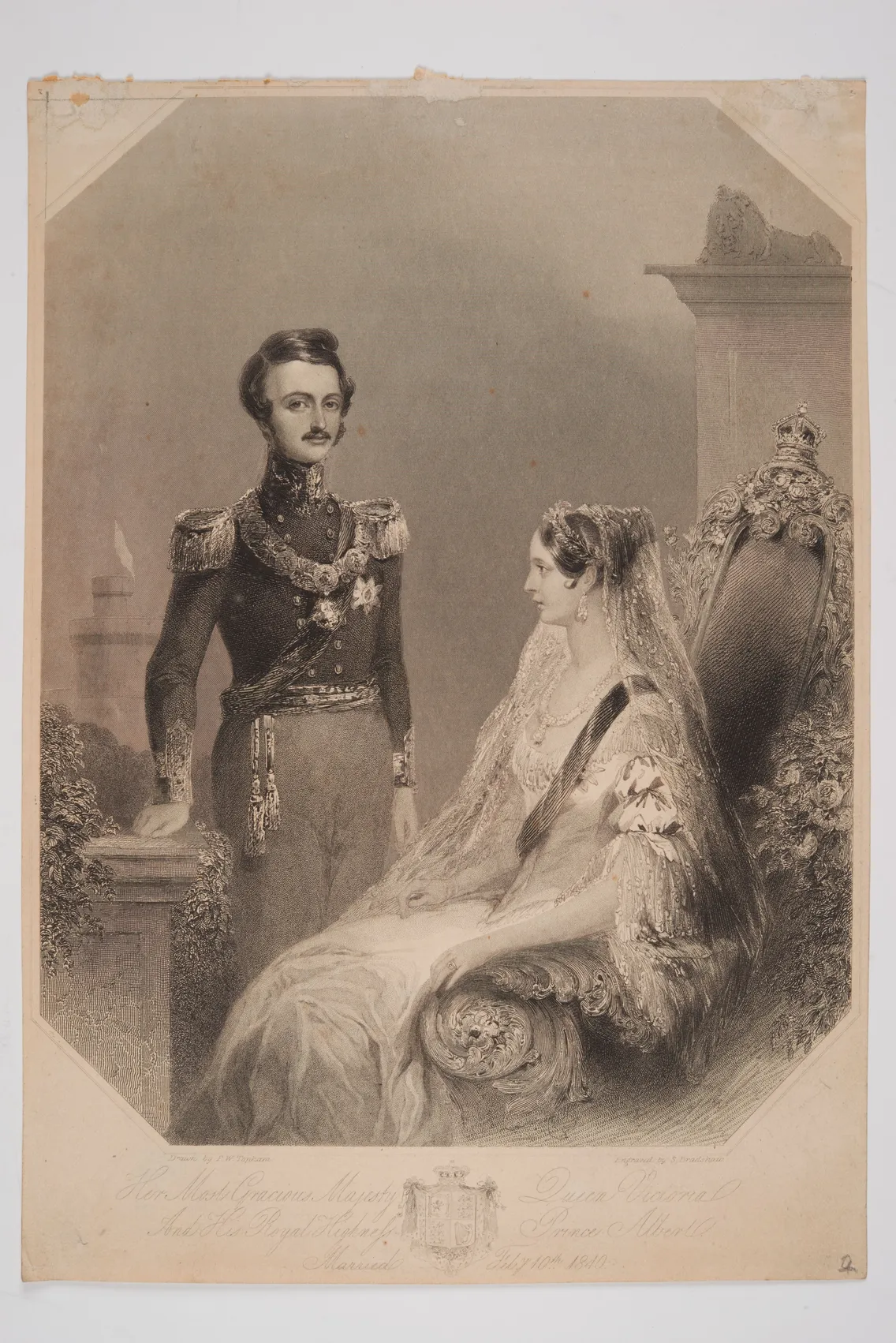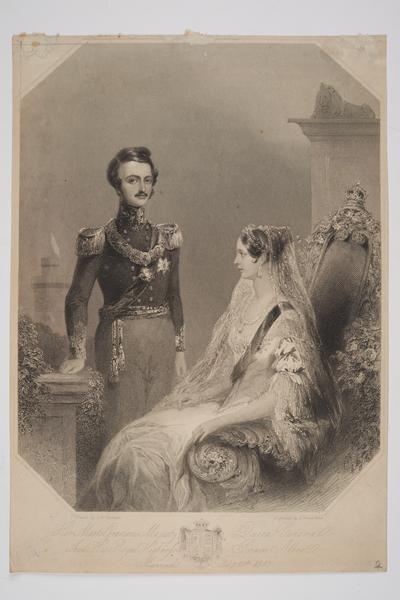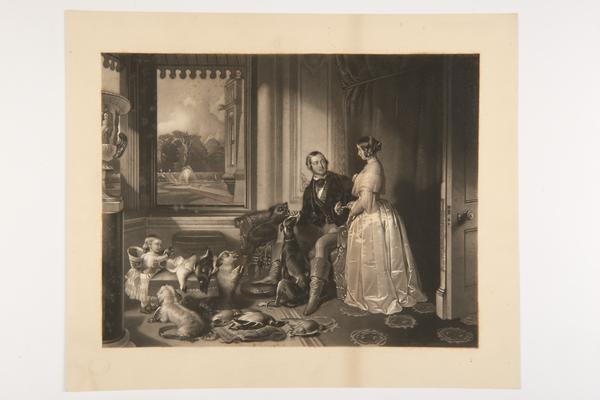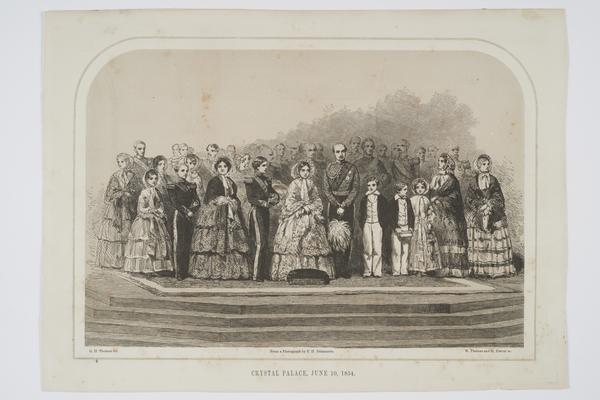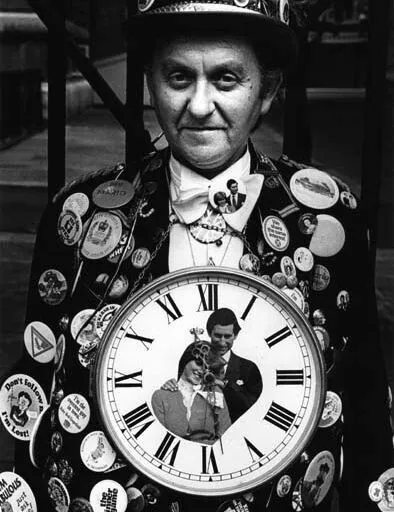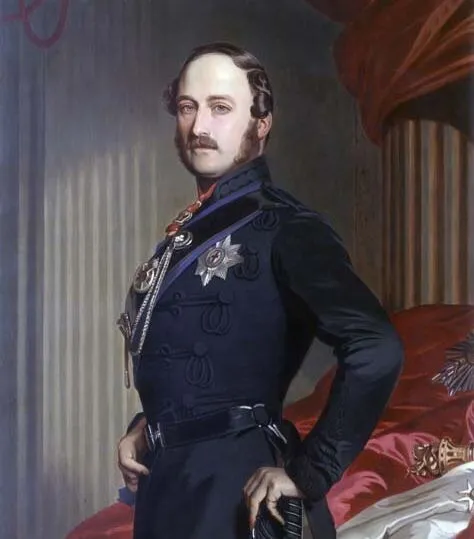The marriage of Queen Victoria & Prince Albert
Victoria and Albert are one of the royal family’s most well-known love stories. They were married for 21 years before Albert’s untimely death in 1861.
1840–1861

The 19th-century power couple
“Oh! To feel I was, and am, loved by such an Angel as Albert, was too great [a] delight to describe!” wrote Queen Victoria in 1839.
Throughout Britain’s history, royal marriages have been a typically strategic, political and diplomatic affair. The relationship between Victoria and her German-born beau, Albert of Saxe-Coburg and Gotha, was encouraged by their mutual uncle Prince Leopold, later the first king of the Belgians. But the two were still totally infatuated with one another.
The first cousins met at Victoria’s 17th birthday in 1836 and, according to their journals, it was love at first sight. Over the course of their relationship, they were looked to as the ideal of a happy and devoted couple.
A royal wedding of firsts
Victoria became queen in 1837. But according to tradition, no one could propose to a reigning monarch. So she proposed to Albert during his second visit in 1839. She wrote in her journal: “It would make me too happy if he would consent to what I wished (to marry me).”
Victoria and Albert married at the Chapel Royal in St James’s Palace on 10 February 1840. Victoria wore a white Spitalfields satin and lace dress. This was an unusual choice at the time – most women wore rich colours like red, blue and brown. The white wedding dress has been popular ever since.
It was also the first royal wedding for over 100 years to be held in the afternoon, around 1pm, rather than late at night. So thousands of Londoners gathered to cheer the couple as they processed through the streets. It was a spectacle – just like royal weddings are today.
Albert and Victoria’s family life
The couple had nine children together: four boys, five girls, all born between 1840 and 1857. They presented an image of harmonious family life. And they popularised religious family traditions still used today – such as decorating Christmas trees and gift-giving, imported via Albert’s German heritage.
In the home, the couple adopted traditional gender roles where Albert had authority on family matters. Victoria’s image as an obeying wife grew over their marriage. They had a powerful and popular domestic image and were often seen at home wearing ‘ordinary’ clothes, further appealing to the middle classes.
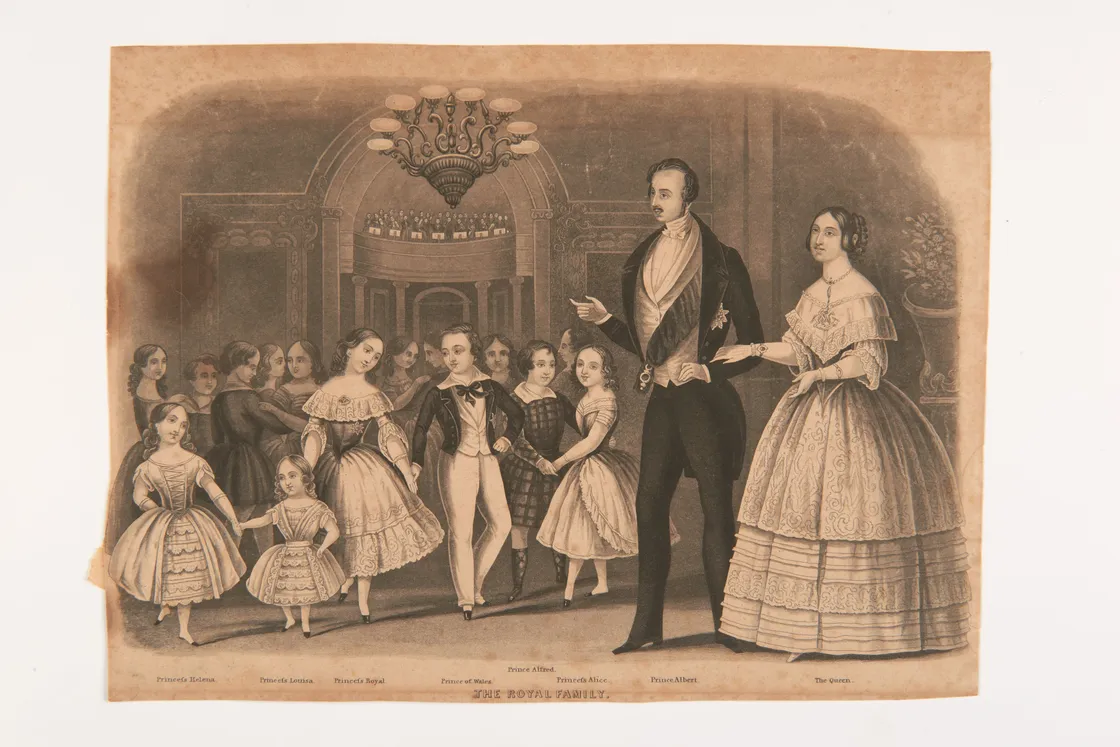
Queen Victoria, Prince Albert and their first six children in a ballroom.
They made many public appearances together, including at grand openings like the Crystal Palace in Sydenham in 1854. Albert also took on many of Victoria’s commitments as queen, earning himself the powerful role as prince consort. By the 1860s, the queen heavily relied on him.
On the pulse of new technology
Thanks to Albert’s keen interest in science, the couple were champions of cutting edge 19th-century technologies. The royal home included many new inventions, like the electric telegraph and electric light bulbs. They were also early adopters of daguerreotypes, an early form of photography showcased at Albert’s Great Exhibition of 1851.
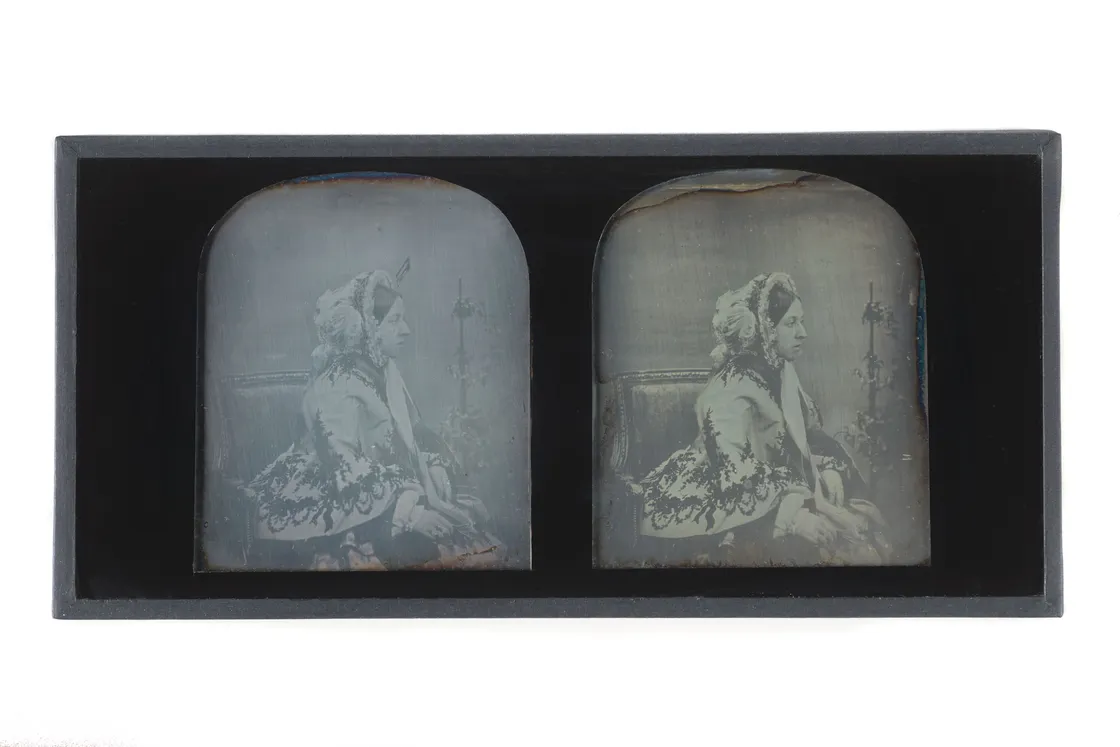
A stereoscopic daguerreotype of Queen Victoria.
The death of Prince Albert
After suffering from bouts of illness throughout his life, Albert died on 14 December 1861. He was 42 years old. It’s thought he died from typhoid fever or a flare up of a stomach condition, like Crohn's Disease. “My life as a happy one is ended,” wrote Victoria.
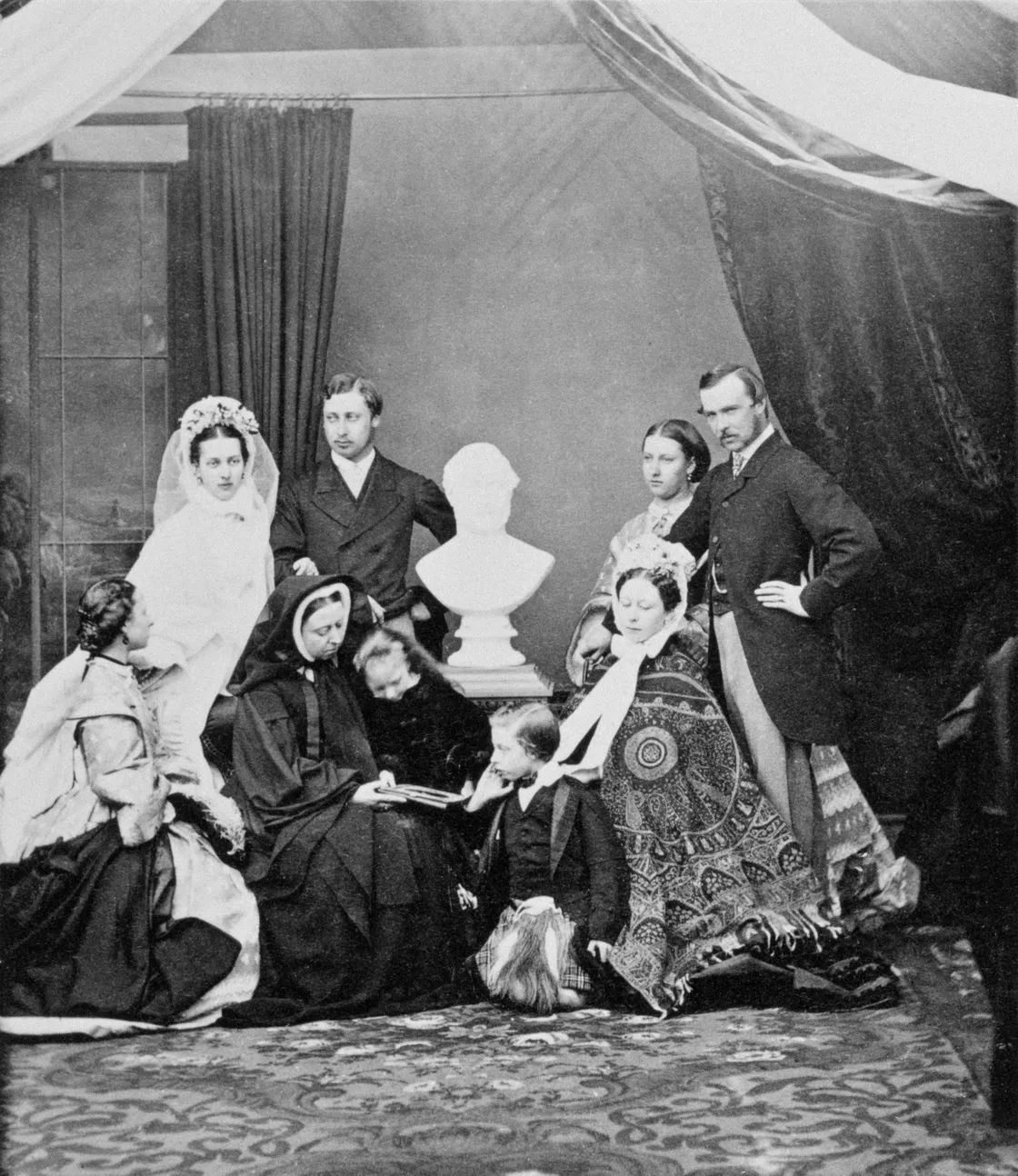
Queen Victoria and her family photographed around the bust of the late Prince Albert.
Overwhelmed with grief, Victoria withdrew from public duties for a decade and wore black mourning clothes for the rest of her life. In the 1870s, to commemorate her husband, she commissioned a memorial in Hyde Park and named the brand new concert hall nearby the Royal Albert Hall.

